Foods Available List for School Year 2020-2021
On December 16, the SY20-21 USDA Foods Available List for Schools and Institutions was published. Each year, USDA works diligently to introduce new products and reformulate items based on feedback from States and school districts. This year, we were pleased to add shredded pepper jack cheese as a new product to the USDA Foods list.
To better meet the needs of school districts, we also added smaller package sizes of frozen tart cherries and mixed vegetables, required commercial Kosher certification for canned corn, canned applesauce, and all of the yogurt products, and increased the fill volume for all USDA Foods canned beans to align with commercial standards.
At USDA, we strive to provide food options that meet the unique needs of school districts across the country by closely monitoring trends and adapting the offerings to meet the changing needs of school districts. To submit new product ideas or feedback on existing products, email us at USDAFoods@usda.gov.
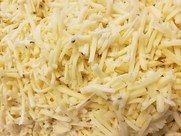
Pepper Jack Cheese
USDA recently announced the availability of shredded pepper jack cheese as an option for school districts starting in SY20-21. This is an exciting addition to the list of USDA Foods as it adds a new type of cheese for schools in addition to the current mozzarella, cheddar, and American cheese options.
Pepper Jack Cheese is now available in the National School Lunch Program (NSLP), Summer Food Service Program (SFSP), and to States offering USDA Foods for the Child and Adult Care Food Program (CACFP). Pepper jack cheese (111220) has a Monterey jack cheese base and includes jalapeno pepper pieces to provide a mild spice profile. The USDA Foods pepper jack cheese is shredded, refrigerated, and delivered in cases with 4, 5-pound bags. It c redits as a meat/meat alternate.
USDA staff attended the annual USDA Child Nutrition State Agency Conference December 4 in Alexandria, VA to highlight USDA Foods in Schools newest addition to the Foods Available List. The conference focused on the Summer Food Service Program (SFSP) and the Child and Adult Care Food Program (CACFP) and USDA was there to provide information on USDA Foods in Schools.
Overwhelmingly, attendees had very positive feedback about the cheese samples and commented that it will be a great addition to the USDA Foods Available List. Conference attendees who manage SFSP and CACFP were encouraged to share their positive feedback with their colleagues who manage USDA Foods in Schools in their State. This cheese can be used with a variety of different menu items and will add a slight spice and a little bit of color to your school menu!
|
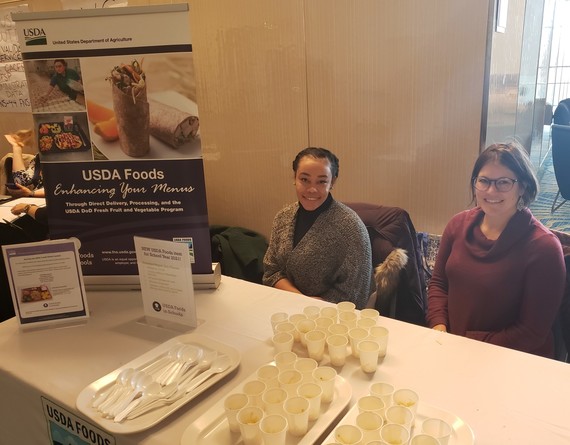
 |
The 2019 Gold Tray Award Winner: Tuckahoe Common School District, NY.
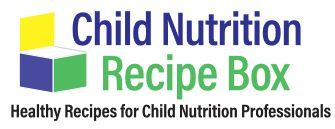
What happened to the USDA Mixing Bowl?
If you are familiar with the USDA Mixing Bowl, you may be wondering where did all of the recipes go? The USDA revamped its website and moved the recipes from the USDA Mixing Bowl to the Institute of Child Nutrition (ICN) Recipe Box.
Child nutrition program operators can find healthy recipes for schools and child care centers that are standardized for 50-100 servings and meet school meal pattern requirements. Need a little inspiration for the New Year, check out the ICN's Child Nutrition Recipe Box today!
|
USDA Foods Data Trends Infographics
USDA is excited to release four infographics on USDA Foods purchases for School Year 2017 – 2018! These four infographics show nationwide data on USDA Foods purchases and can be used by States to learn more about USDA Foods in school meals. All four infographics are available for download on the Food and Nutrition Service (FNS) website and can be used to communicate with your stakeholders about the USDA Foods program. Here is a quick overview of each infographic:
USDA Foods in Schools – This infographic summarizes nationwide USDA Foods purchases including the average cost per pound by food group and the breakdown of total spending and pounds received by food group.
USDA Foods in Schools: Summary by Program – This infographic shows a summary of purchases from all three programs: USDA Foods Bulk for Processing, USDA Foods Direct Delivery, and USDA DoD Fresh. It is important to note that the USDA Foods Bulk for Processing section only includes items classified as a bulk product on the USDA Foods Available List.
USDA Foods in Schools: State Overview– This infographic shows the average number of products ordered by States and the top five products by dollar value and volume. This infographic also displays the value of food orders by State.
USDA DoD Fresh in Schools – This infographic provides an overview of USDA DoD Fresh purchases including a summary of the top five fruit and vegetables received and the total pounds purchased. It is important to note that the items available through USDA DoD Fresh may vary by State.
Visit the FNS website and download your copy now!
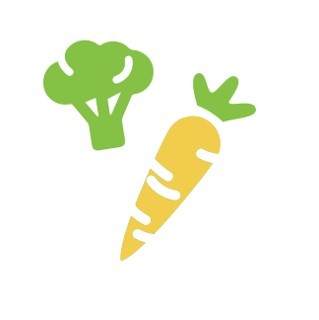
Idaho Shares Best Practices for the USDA DoD Fresh in SFSP Pilot
The Idaho State Department of Education Child Nutrition Programs (ISDE-CNP) participated in the USDA DoD Fresh Fruit and Vegetable Program (USDA DoD Fresh) pilot specifically designed to benefit Summer Food Service Program (SFSP) sponsors. From May – September, 2019, children at 135 summer feeding sites across the State had increased access to locally sourced fresh fruits and vegetables.
The Idaho SFSP trainer notified sponsors of the opportunity with an initial broadcast email and expanded the communication during “in person” trainings held throughout the State for all SFSP sponsors. Pilot participants worked with the USDA DoD Fresh vendor to order produce. Sponsors were able to order local produce using USDA DoD Fresh funds to promote Farm to Summer week July 8 – 12, 2019.
Staff at ISDE-CNP monitored usage of the allocated funds throughout the summer and over 99% of the funds were spent at each site, demonstrating that USDA DoD Fresh was an effective option for SFSP programs in Idaho. For other State agencies who may be looking for ways to increase participation in programs that promote locally sourced foods and would like to encourage increased access and consumption of fresh fruits and vegetables for children, the USDA DoD Fresh Program pilot for SFSP may be a perfect fit!
|
Mixed Berry Cups
USDA has received questions from State Distributing Agencies (SDAs) and Recipient Agencies (RAs) concerning storage and handling of the frozen USDA Foods mixed berry cups. As a reminder, appropriate handling and storage of frozen USDA Foods throughout distribution are essential to maintaining quality and food safety. In addition, proper inventory management will ensure that USDA Foods are distributed in an efficient, timely manner, and in optimal condition.
Before accepting the delivery, take the temperature of the product to ensure it is being held at the right temperature. The frozen fruit cups must be shipped at a maximum temperature of -10° F (-23o C) and storage areas should maintain a steady product temperature of 0° F (-18° C).
Although thawing conditions may vary, schools prefer to serve the mixed berry cups partially frozen. To ensure the best product quality, do not transfer from the freezer to the refrigerator for thawing, more than 24 hours prior to service. Record storage temperatures of frozen USDA Foods daily to ensure the integrity of products, noting any deficiencies and corrective actions. By taking the necessary precautions, food losses can be minimized or prevented.
It is important to submit a complaint whenever a product received does not meet the customers’ expectations. We value your feedback about USDA Foods; your feedback helps us to provide the highest quality foods that meet your needs. RAs who have issues/concerns with frozen USDA Foods product(s) should contact their SDA with as much information as possible. The SDA will report the complaint through the Web-Based Supply Chain Management System (WBSCM).
For more information on how to file a USDA Foods Complaint, visit the FNS website.
To better serve customers, there are additional communication channels to assist in complaint resolution. The USDA Complaints Team is available Monday to Friday, 6:00 a.m. – 5:00 p.m. Eastern Time. Email USDAFoodsComplaints@fns.usda.gov or call the USDA Foods Complaint Hotline at 800-446-6991.
Maryland USDA Foods Processing Show
USDA staff recently attended the USDA Foods Processing Show and training hosted by the Maryland State Department of Education. The event provided school districts with a comprehensive overview of USDA Foods topics including ordering options, making the best use of USDA Foods entitlement, and USDA Foods processing value pass through methods.
The show also featured sessions presented by representatives for the Egg Board and the Alaskan Pollock industry to provide a behind-the-scenes look at how their products get from the farm to the plate. It’s always great for USDA staff to get out and see how USDA Foods are being used in the processing program and to understand how States are training school districts about making the most of USDA Foods.
Thanks to the Maryland State Department of Education and the processors for allowing USDA to join you!
 |
|
Webinar Recording Available: What's New in the USDA DoD Fresh Program?
In case you missed it, FNS hosted a webinar on November 21 for State Distributing Agency staff who manage USDA Foods in Schools. The webinar shared updates on the USDA DoD Fresh Program.
The webinar was recorded and is available to view at this link.
|
Recent Updates for eINV Receipting and Entitlement Reports
The latest enhancements and maintenance for Web Based Supply Chain Management (WBSCM) were implemented in December 2019, with the following impacts to domestic customers:
The entitlement reports have been updated to include the following optional fields:
- Entitlement/Bonus Summary Report - RA Zone, RA identification Number
- RA Entitlement/Bonus Detail Report - RA Zone, RA identification Number, Gross Weight
- SDA Entitlement/Bonus Detail Report - Gross Weight
The eINV screen will now show a separate row for each ASN/BOL number associated with a Purchase Order (PO) line item. During the receipting process, users will enter information on the row that corresponds to the BOL number identified on the provided paperwork.
 Electronic invoicing (eINV) functionality is available for all new purchase orders beginning in August 2019. Until all previously placed orders have been delivered, users are encouraged to double-check the column where they are entering receipts as there are differences between eINV and the legacy receipting screen. Refer to the Enter Domestic Shipment Receipt (eINV) and Modify Domestic Shipment Receipt (eINV) work instruction for an explanation of the new screen layout and steps to modify a recently entered receipt.
Future development will address some of the known limitations of eINV receipts such as the ability to cancel a receipt if entered accidentally and problems encountered when the vendor has not yet entered an ASN. Please see the December e-letter for guidance if you encounter an issue with a missing ASN.
The Release Notes, which summarize all recent changes and impacted training materials, can be found in WBSCM at Help > Training > Release Notes.
If you have any questions, please contact the WBSCM Service Desk at wbscm.servicedesk@caci.com or call (877) 927-2648.
New Features for FFAVORS
The Fresh Fruit and Vegetables Order Receipt System (FFAVORS) supports the ordering process for produce received through the USDA DOD Fresh Fruit & Vegetable Program. In January, FFAVORS Release 2.10 went into production. The key changes impacting customers for the National School Lunch Program (NSLP) and Summer Food Service Program (SFSP) include:
- The Usage Report now allows the user to include only local materials. To apply the filter, users will select the Local-only checkbox on the report criteria screen.
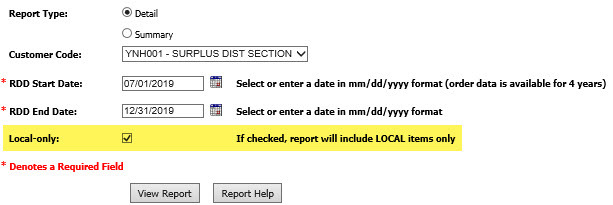
- A new field has been added for a customer organization to provide the date it was created in FFAVORS. The Organization-POC Listing Report now includes the new field Org Create Date. This information will help District and State users identify new customers for the current school/budget year.
- Because not all programs utilize entitlements (e.g., SFSP), the word “entitlement” has been replaced with “dollars” in several places. Additionally, the fields in the Budget/Balance Spent Report were streamlined; the remaining dollar amount fields include Federal Dollars, Federal Spent Funds, Federal Balance (Federal Dollars minus Federal Spent Funds), and State Spent Funds.
Users are encouraged to review the most up-to-date manual, which can be accessed via the Help link on the FFAVORS home page.
If you have any questions, please contact your FFAVORS account representative or email the FFAVORS Help Desk at sm.fn.ffavors@usda.gov.
System Reminders
- 01/12/2020 – Quarterly FFAVORS Release
- 02/13/2020 – WBSCM Maintenance Release
- 03/29/2020 – Quarterly FFAVORS Release
- 04/01/2020 - WBSCM Enhancement Release
Planned dates for system activities are subject to change.
USDA will be participating in these upcoming meetings in 2020:
We look forward to meeting you and hope to see you there!
|